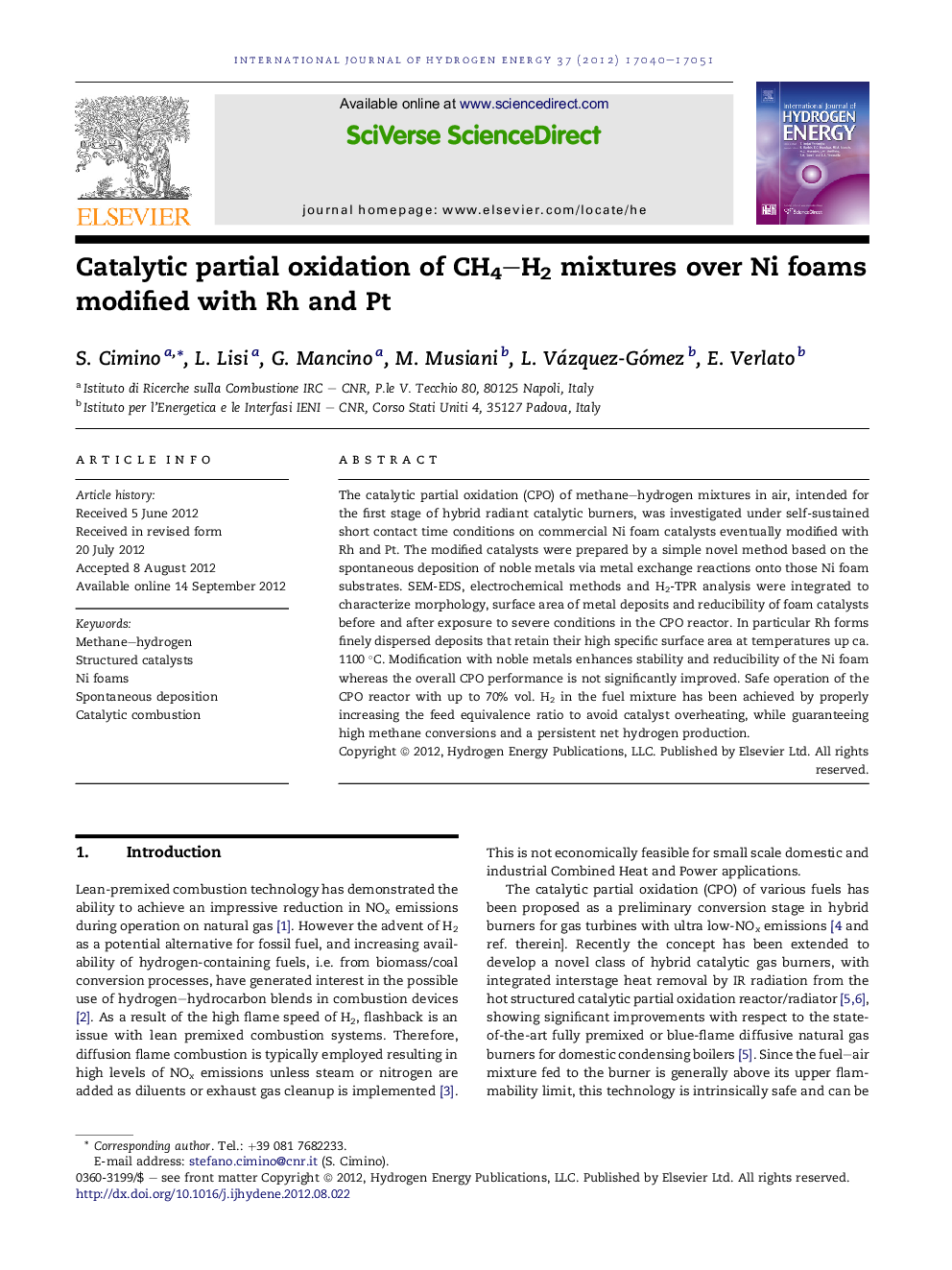| Article ID | Journal | Published Year | Pages | File Type |
|---|---|---|---|---|
| 1270886 | International Journal of Hydrogen Energy | 2012 | 12 Pages |
The catalytic partial oxidation (CPO) of methane–hydrogen mixtures in air, intended for the first stage of hybrid radiant catalytic burners, was investigated under self-sustained short contact time conditions on commercial Ni foam catalysts eventually modified with Rh and Pt. The modified catalysts were prepared by a simple novel method based on the spontaneous deposition of noble metals via metal exchange reactions onto those Ni foam substrates. SEM-EDS, electrochemical methods and H2-TPR analysis were integrated to characterize morphology, surface area of metal deposits and reducibility of foam catalysts before and after exposure to severe conditions in the CPO reactor. In particular Rh forms finely dispersed deposits that retain their high specific surface area at temperatures up ca. 1100 °C. Modification with noble metals enhances stability and reducibility of the Ni foam whereas the overall CPO performance is not significantly improved. Safe operation of the CPO reactor with up to 70% vol. H2 in the fuel mixture has been achieved by properly increasing the feed equivalence ratio to avoid catalyst overheating, while guaranteeing high methane conversions and a persistent net hydrogen production.
► CPO of CH4–H2 mixtures in air was studied for hybrid catalytic radiant burners. ► Pt and Rh modified Ni foams were prepared by a novel spontaneous deposition route. ► Pt and Rh deposits had large surface area measured by electrochemical methods. ► Noble metal deposits enhanced Ni reducibility and stability during CPO. ► H2-rich mixtures were safely converted with net H2 production and without flashback.
